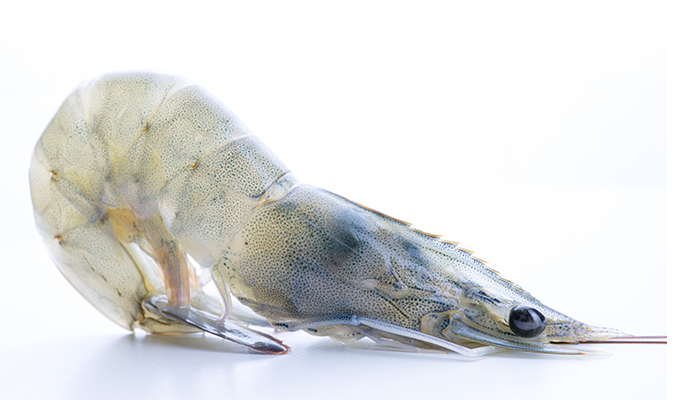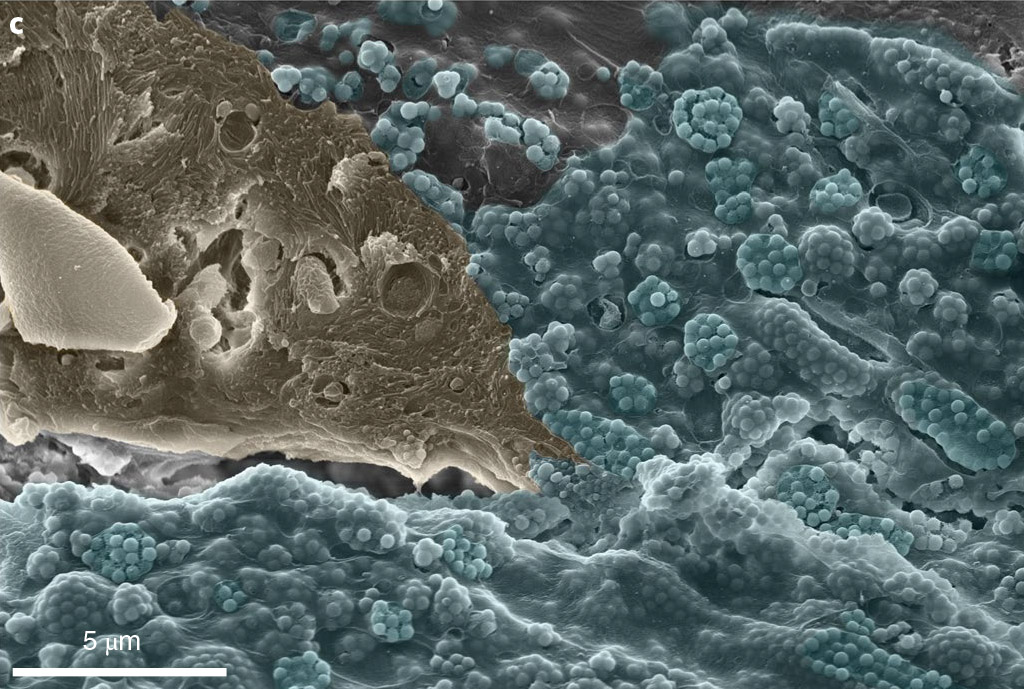Are you a journalist? Please sign up here for our press releases
Subscribe to our monthly newsletter:

It is all in the eye of the beholder – even when the beholder is a shrimp. How does a shrimp see in the dim depths, dozens of meters below the ocean’s surface? The answer, obtained through a collaborative effort of chemists and physicists at the Weizmann Institute of Science and Ben-Gurion University of the Negev, reveals a complex structure that has evolved over millions of years to enable these tiny creatures to see quite well in their immediate environment. The findings of this study were recently published in Nature Nanotechnology.
Former postdoc Dr. Ben Palmer of the Institute’s Structural Biology Department (now at Ben-Gurion University of the Negev) and Dr. Venkata Jayasurya Yallapragada of the Physics of Complex Systems Department conducted this study together with colleagues in Ben-Gurion University, and with Profs. Dan Oron, Steve Weiner and Lia Addadi of the Weizmann Institute. Shrimp eyes are compound eyes, like those of insects. The researchers found that unlike our eyes that work with lenses, each of these contains a series of nanometer-sized mirrors arrayed in a concave formation that functions something like a lens.
Such an eye structure has been seen before, but the scientists decided to take a closer look at the mirrors’ structure and how they function. Here they found the reflective material also coats the rhabdoms – light-detectors in the shrimp eye’s retina. These rhabdoms, which are highly sensitive to light, are arranged in the retina in seven-pointed star formations.

The rhabdom coating is composed of nanospheres. These nanospheres are made of an unusual biocrystal, and their structure is built up from of dozens of sheets just a few nanometers thick forming a covering around a hollow center. These hollow balls have a property known as double refraction, and the measure of this refraction – its index – varies with the direction of light propagation relative to the sphere. Along the circumference, the refraction index is close to two – among the highest ever measured in a natural, organic material. Yet, along the radius of the sphere, the index is 1.4 – just a bit higher than that of water. Just a very thin layer of this material is needed to reflect light – especially the blue light that filters through the water. Photons are thus reflected again and again inside the eye, until they are directed toward the back, into the “right place,” and absorbed in the light-sensitive material there.
In this way, the shrimps’ eyes make use of every bit of light available, and they are able to discern nearby objects in the dim conditions in which they live. The scientists hope the insights of this research will inspire the creation new optical coatings and specialized paints.
Prof. Lia Addadi is the incumbent of the Dorothy and Patrick Gorman Professorial Chair.
Prof. Dan Oron is Head of the Crown Photonics Center; his research is supported by Dana and Yossie Hollander; the Centre National de la Recherche Scientifique; the KLA-TENCOR Corporation; and the European Research Council. Prof. Oron is the incumbent of the Harry Weinrebe Professorial Chair of Laser Physics.
Prof. Stephen Weiner’s research is supported by the Dangoor Accelerator Mass Spectrometer Laboratory.